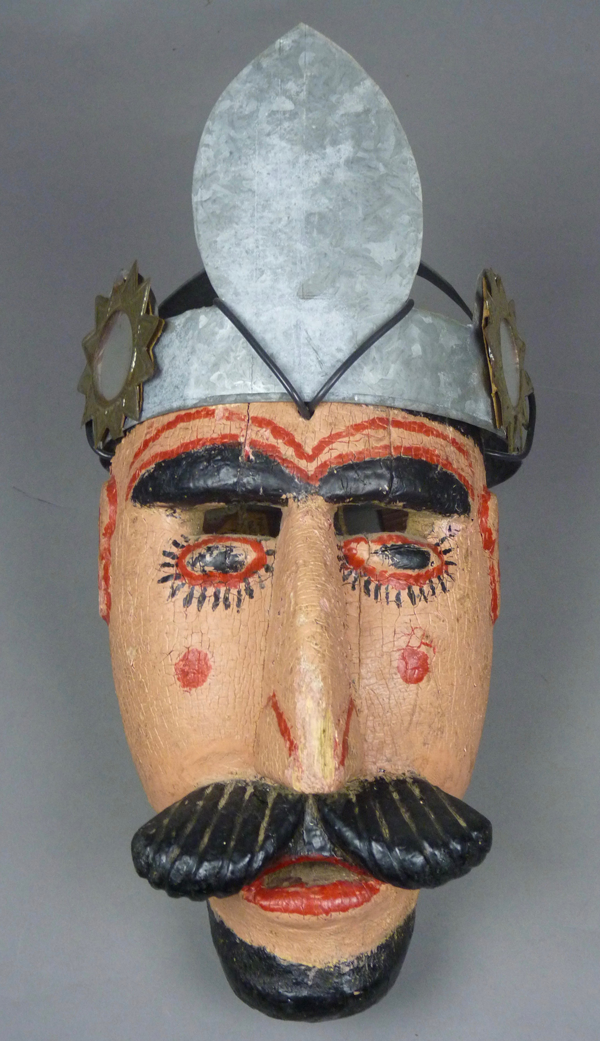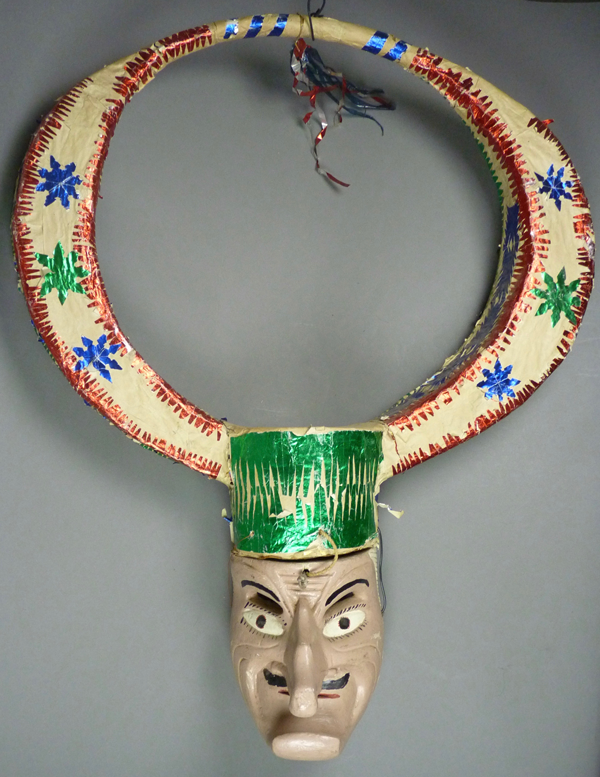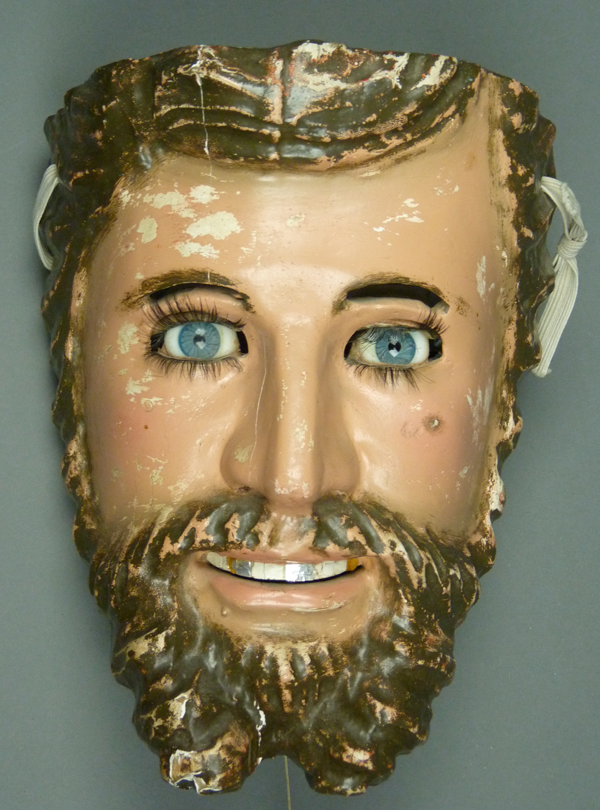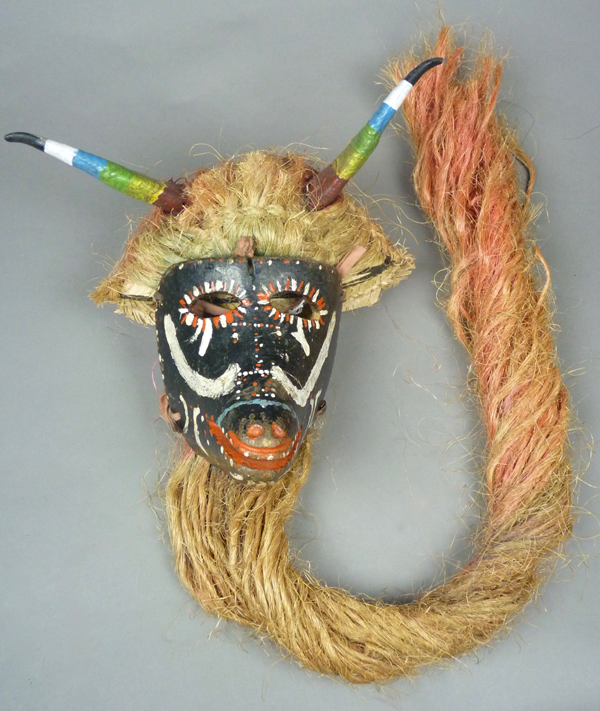Last week I began a series of posts about Moro masks from the State of Mexico, the state that surrounds Mexico City. I had a pair of masks from about 1970, and miraculously, I found a Youtube™ video demonstrating that such masks were still in use in their traditional setting, nearly 50 years later. Today we will examine other Moro masks from that era.
Today’s trio of Moro masks all appear to be by the same hand. They are of three different sizes and the middle sized one seems less worn, while the other two could easily date to the 1940s. Despite their differences in size, they confirm one another as representatives of a type. I bought all three from René Bustamante, two, in August of 1993, which were found in Atlacomulco, and the third, from Agua Fria, in April of 1994. Such masks do not appear in recent video performances from either town. I discovered a fourth example in this style in a valuable reference book—Museo Nacional de la Máscara: Catálogo— a catalogue of the masks in the collection of Victor Moya Rubio (no date, page 108, plate 371). This near duplicate was said to be from San Pedro del Limón, State of Mexico. That town is about 150 miles south of Atlacomulco; these masks really travel! A Youtube video of the Moros y Cristianos of Limón in 2015 shows a variety of Moro dancers, some withe Lunar headdresses, some with conical headdresses, and others with crowns. Their masks are larger than today’s trio, with very large noses.
https://www.youtube.com/watch?v=sBa1V1rvcgk
And here is yet another example of this type, from Pinterest™.
https://www.pinterest.com/pin/123567583496327056/
Here is the largest, complete with a helmet made of galvanized tin that René Bustamante supplied as appropriate for this mask; I believe that the mask was collected without any headdress.




